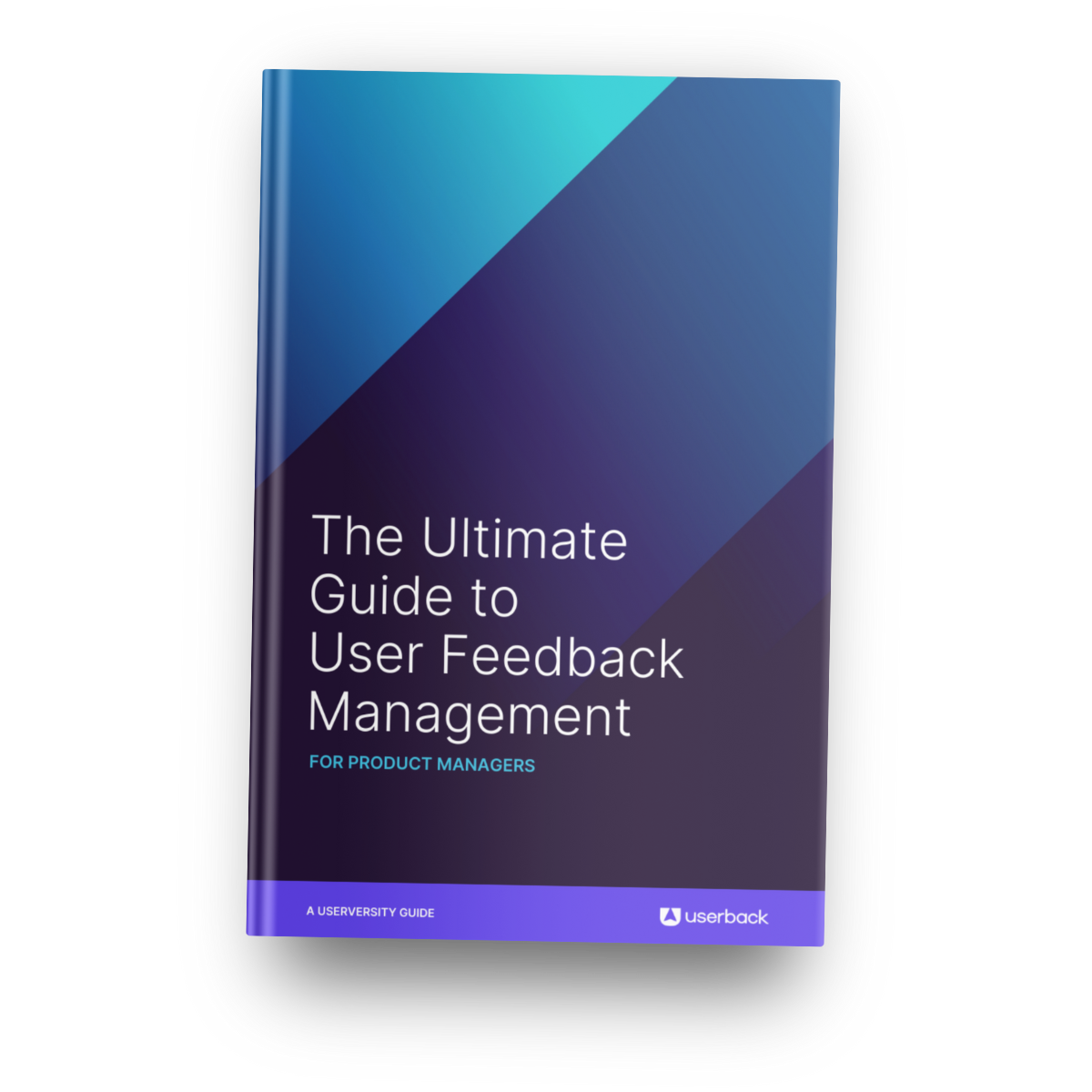
Introduction
In the highly competitive and dynamic world of SaaS, optimizing product-market fit is crucial for success. One of the key ingredients in this process is gathering user feedback. By understanding what users want and need, SaaS product managers can make informed decisions to accelerate and optimize product-market fit.
In this guide, we will explore two popular feedback methods – feedback forms and surveys, and realtime in-app visual feedback. We’ll delve into the pros and cons of each method and provide insights on how to leverage them effectively.
Understanding Feedback Forms and Surveys
Before we dive into the various feedback methods, it’s important to understand the purpose of feedback forms and surveys:
Feedback forms
Usually standalone web forms, feedback forms allow users to provide their insights and suggestions. Surveys are more structured questionnaires that cover specific topics or gather specific data points. Both methods have their advantages and drawbacks.
Feedback forms are a versatile tool for gathering user feedback. They allow for open-ended responses, giving users the opportunity to express their thoughts fully. These forms can capture in-depth feedback and provide a wealth of qualitative data. However, one potential drawback of feedback forms is the possibility of user bias or lack of engagement, as users may not take the time to fill them out.
Surveys
Surveys, on the other hand, offer a more structured approach to gathering feedback. They provide valuable quantitative data that is easier to analyze and compare.
Surveys can cover a wide range of topics and can be used to collect specific metrics or insights. However, the structured nature of surveys may limit the depth of user feedback and prevent users from expressing nuanced opinions.
To make feedback forms and surveys effective, it’s essential to follow best practices:
- Keep the forms or surveys concise and easy to understand. Utilize clear and simple language to ensure users can provide feedback without confusion.
- Consider using progressive profiling to gather more information over time. This approach involves gradually increasing the depth of questions as users engage more with your product.
- Regular review and analysis of the feedback collected is crucial to identify patterns and trends.
Harnessing Realtime In-App Visual Feedback
While feedback forms and surveys have been widely used, a newer feedback method has gained popularity in recent years – realtime in-app visual feedback. This method allows users to provide feedback directly within the application they are using, offering a more seamless and contextual experience.
Realtime in-app visual feedback enables users to provide feedback at the moment of interaction, eliminating the need to switch to a separate form or survey. This method captures user sentiments and pain points in real-time, enabling SaaS product managers to respond swiftly and address issues promptly. The immediacy of this feedback method helps in capturing accurate and timely insights.
Despite its advantages, there are limitations and challenges associated with realtime in-app visual feedback. For example, users may not want to interrupt their workflow to provide feedback, and this method may only capture feedback from users who are actively using the application.
Additionally, managing and responding to in-app visual feedback can be time-consuming for product teams, especially if the volume of feedback is high.
To make the most out of realtime in-app visual feedback, it’s essential to implement it strategically. Begin by identifying the key areas within your application where user feedback is most valuable. Consider incorporating feedback options within the user interface to encourage user participation. By making the feedback process seamless and non-disruptive, users are more likely to engage. Finally, establish clear processes for managing and prioritizing in-app visual feedback to ensure timely responses and efficient issue resolution.
Using an end-to-end user feedback platform like Userback helps to automate and streamline the entire process from collection to closure, allowing you to get the insights and information you need to build better products, faster.
Comparing the Pros and Cons
Now, let’s dive deeper into the pros and cons of feedback forms and surveys versus realtime in-app visual feedback.
Feedback forms and surveys:
Pros:
- Allow for detailed and qualitative feedback.
- Provide the opportunity for users to freely express their thoughts.
- Can capture a wide range of user perspectives and insights.
Cons:
- Users may not take the time to fill out feedback forms.
- Limited context and lack of real-time feedback.
- Analysis of open-ended responses can be time-consuming.
Realtime in-app visual feedback:
Pros:
- Captures feedback in real-time, providing timely insights.
- Seamless and contextual feedback collection.
- Enables product managers to respond and address issues promptly.
Cons:
- May not capture feedback from users who are not actively using the application.
- Managing and prioritizing feedback can be challenging.
- Requires technical implementation within the application.
Ultimately, the effectiveness of each method depends on the specific use case and goals of the SaaS product manager.
Feedback forms and surveys are well-suited for gathering qualitative insights and capturing a wide range of user perspectives.
Realtime in-app visual feedback excels at capturing timely and contextual feedback, allowing for swift issue resolution. To achieve a comprehensive feedback strategy, it is recommended to integrate both methods strategically.
Leveraging Feedback for Accelerating and Optimizing Product-Market Fit
Now that we have explored the various feedback methods, let’s delve into how SaaS product managers can leverage feedback to accelerate and optimize product-market fit.
Feedback plays a crucial role in accelerating product-market fit by providing valuable insights into user needs and expectations. By actively listening to user feedback, product managers can gain a deeper understanding of their target audience and make informed decisions on product improvements and optimizations.
To extract actionable insights from feedback forms, surveys and realtime in-app visual feedback, it’s important to analyze the collected data thoroughly. Look for patterns, trends, and common pain points among users.
Categorize feedback based on priority and impact on the overall user experience. By prioritizing feedback based on its significance and relevance, product managers can make informed decisions on which issues to address first.
In addition to identifying pain points, feedback can also spark new ideas and opportunities for product enhancements. By consistently reviewing feedback, product managers can identify areas for innovation and iterate on existing features or introduce new ones. Feedback can serve as a source of inspiration, guiding the product team towards solutions that align with user needs and expectations.
Real-world examples of SaaS products that have successfully leveraged feedback for product-market fit optimization include:

Slack:
The popular team collaboration tool Slack is continuously iterated and improved based on user feedback. They actively encourage users to provide feedback and suggestions through their feedback forms and user forums. By listening to user feedback, Slack has introduced features like threaded messages, dark mode, and improved search capabilities, which have enhanced the overall user experience.

Intercom:
Intercom is a customer messaging platform that has leveraged user feedback to optimize its product-market fit. By actively collecting feedback through their in-app messenger and customer support channels, Intercom has made significant improvements to their onboarding experience, chat features, and overall user interface. This feedback-driven approach has helped them align their product offerings with user needs.

HubSpot:
HubSpot is an all-in-one inbound marketing and sales platform that values user feedback. They have a dedicated feedback forum where users can suggest ideas and new features. Through this feedback, HubSpot has made improvements to their CRM capabilities, reporting features, and integrations. Their commitment to listening to user feedback has allowed them to consistently optimize their product-market fit.

Airbnb:
While not a traditional SaaS product, Airbnb is an example of a platform that has leveraged user feedback to optimize its product-market fit. Airbnb gathers feedback through user reviews, ratings, and direct interaction with hosts and guests. The feedback is used to make improvements to their platform, including refining their search and booking process, enhancing the user profile system, and expanding safety measures. Source: Airbnb Newsroom
By incorporating customer feedback directly into the product roadmap, product managers can align their offerings with user preferences and ultimately achieve a stronger product-market fit.
Conclusion
Choosing the right feedback method is essential for SaaS product managers looking to optimize product-market fit:
- Feedback forms and surveys provide qualitative insights, allowing users to freely express their thoughts and opinions.
- Realtime in-app visual feedback, on the other hand, captures insights in real-time, enabling swift issue resolution.
By leveraging both methods effectively, product managers can accelerate and optimize product-market fit.
It is crucial to select the appropriate feedback method based on specific goals and target audience. Regular review and analysis of feedback collected are necessary to continuously iterate and improve product offerings. SaaS product managers are encouraged to experiment with different feedback approaches and remain open to user feedback as a valuable source of inspiration for innovation.
By prioritizing user feedback and actively incorporating it into the product development process, SaaS product managers can drive product-market fit optimization and ultimately deliver exceptional user experiences.
How Userback can help
Founded in Australia in 2016, Userback is a market-leading user feedback platform helping 20,000+ software teams to understand what customers need so they can build better web applications, faster.
Userback streamlines and automates the realtime in-app collection, evaluation and management of visual feedback and contextual surveys. Userback can be used standalone or seamlessly integrated into existing business workflows to allow product managers and developers to validate ideas, optimize product-market fit, refine roadmaps, prioritize features, fix bugs and deliver value with greater insight, impact and efficiency.
Start free at userback.io/signup
Power up your feedback loop with The Ultimate Guide to User Feedback for Product Managers
If you enjoyed this article, you might want to download The Ultimate Guide to User Feedback Management. From collection to closure, this comprehensive eBook highlights what you can be doing to streamline your user feedback processes and better understand what your users need in order to deliver the features they want, faster!

